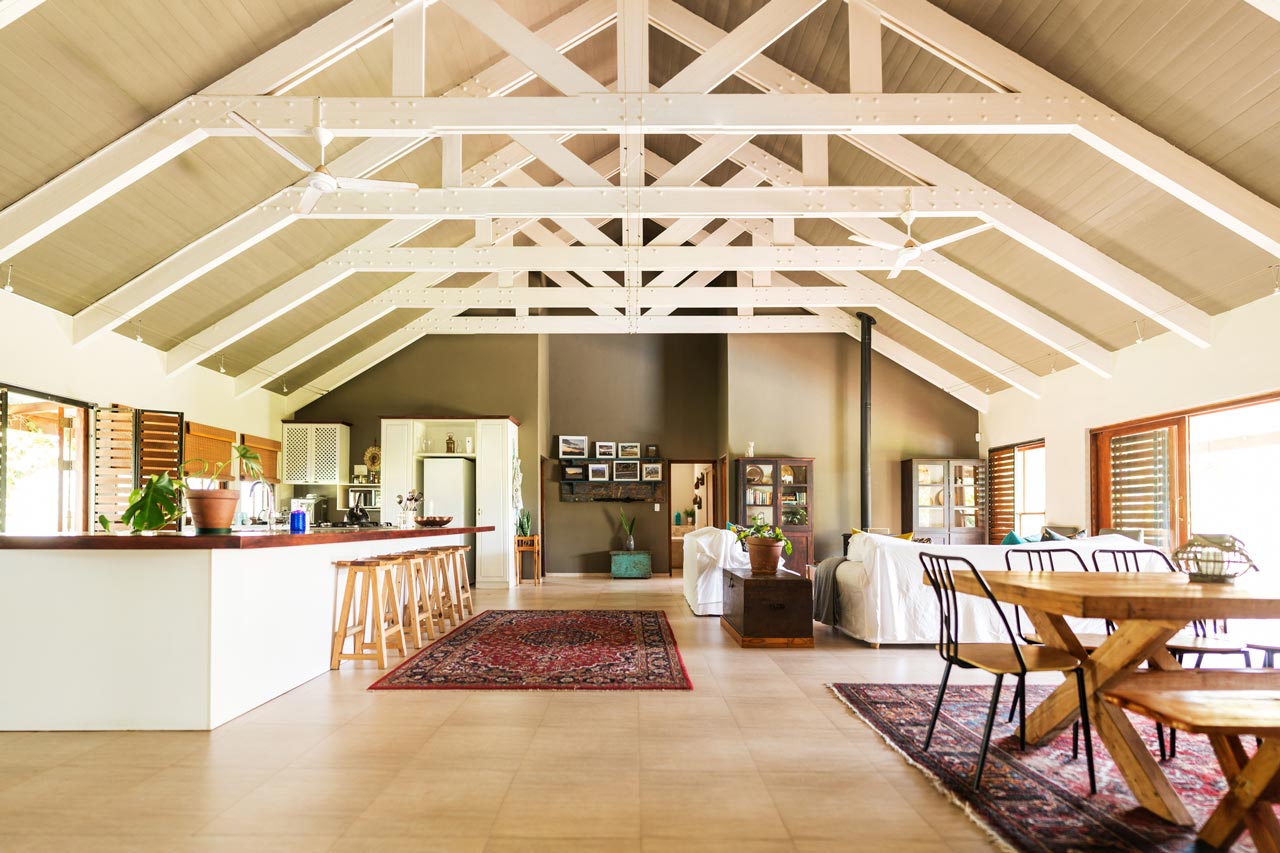Barndominiums Vs. Traditional Homes: a Detailed Contrast of Way Of Living and Capability
The choice between barndominiums and conventional homes encompasses various factors, consisting of way of living preferences and functional requirements. Barndominiums are identified by their open formats and versatility, typically attracting those who focus on common living and flexibility. On the other hand, typical homes offer a more organized environment, which may much better offer family members seeking privacy and a sense of background. As we take a look at the price implications and environmental considerations, it becomes clear that the choice prolongs beyond mere visual appeals and capability; it welcomes a deeper expedition of what truly defines a home.
Summary of Barndominiums
Barndominiums, a novel housing trend acquiring appeal across numerous areas, blend the rustic appeal of barn-style style with the performance of modern space. These unique structures normally contain a steel or wood framework, incorporating open layout and high ceilings with energy-efficient features. Usually located on large rural properties, barndominiums use property owners the opportunity to appreciate a serene way of life while offering sufficient space for numerous tasks.
The flexibility of barndominiums expands past their aesthetic allure; they can work as both living quarters and functional areas for pastimes, workshops, and even tiny services. Their adaptive design permits very easy customization, accommodating varied household needs and choices. Lots of owners appreciate the reduced upkeep demands related to metal siding and roofing, contributing to long-term sturdiness.

Qualities of Traditional Residences
Emphasizing ageless style and comfort, typical homes are characterized by their unique architectural styles, which usually reflect historical impacts and regional visual appeals. Typical functions include balanced exteriors, gabled roofings, and a focus on workmanship, leading to a warm and inviting atmosphere.
Traditional homes frequently incorporate components such as crown molding, wainscoting, and hardwood floor covering, boosting their timeless charm. They usually feature numerous spaces with specified functions, advertising household communication while permitting for privacy. visit site. The design typically includes official living and eating areas, which contribute to entertaining visitors and hosting family members celebrations
Outside products such as brick, timber, or rock are regularly used, contributing to resilience and a sense of permanence. Barndominium builder. Additionally, numerous conventional homes are developed with front patios or stoops, fostering a sense of community and link with the area
Landscape design plays a considerable function in conventional home design, with well-maintained gardens and paths that improve aesthetic appeal - read more. In general, conventional homes embody a sense of nostalgia and security, interesting those that value heritage and an extra organized living atmosphere
Cost Comparison
Typically, a cost contrast in between barndominiums and standard homes exposes significant differences in building and construction expenditures and general investment. Barndominiums, frequently constructed from steel or steel structures, usually incur lower product and labor expenses than conventional homes built from timber and brick. The simplified layout of barndominiums can equate to reduced building and construction times, additionally reducing labor costs and quickening occupancy.
Typically, the expense per square foot for a barndominium varies from $100 to $150, while standard homes can vary extensively, normally falling in between $150 and $300 per square foot, depending upon location, products, and design intricacy. This cost difference makes barndominiums an appealing alternative for budget-conscious purchasers looking for larger space without compromising quality.
In addition, barndominiums may bring about long-term financial savings through reduced maintenance expenses, power effectiveness, and insurance policy rates. Their sturdy construction products often need much less upkeep gradually compared to standard homes. Nonetheless, it is important to take into consideration that while initial expenses might be lower for barndominiums, the final financial investment will certainly also depend upon specific customization and preferred services, which can influence the general cost in both real estate types.
Way Of Life and Room Factors To Consider
When considering lifestyle and space, barndominiums provide a special adaptability that allures to a selection of homeowners. These hybrid structures combine domestic living with functional space, typically featuring open layout that can be adapted to suit individual needs. This adaptability is particularly advantageous for families or people looking for a tailored living setting, permitting for varied uses such as office, workshops, click here to view or recreational areas.

In addition, the aesthetic allure of barndominiums can deal with both rustic and contemporary preferences, making them a versatile option for various layout preferences (Barndominium repair). Ultimately, the selection between a barndominium and a standard home typically rests on exactly how well each alternative lines up with the home owner's way of life desires and spatial requirements, highlighting the relevance of considering individual priorities in the decision-making process
Ecological Impact and Sustainability
The environmental influence and sustainability of barndominiums present compelling benefits contrasted to conventional homes. Largely constructed from steel and other sturdy materials, barndominiums are typically constructed using recycled resources, minimizing the need for new materials and lessening waste. Their layout generally highlights open areas, which can bring about lower energy usage for cooling and heating contrasted to traditional homes with more segmented designs.
In addition, barndominiums can incorporate sustainable features such as solar panels, rainwater harvesting systems, and advanced insulation methods, boosting their power performance. The versatility of their design allows property owners to integrate these innovations a lot more effortlessly than in several typical homes, which might call for considerable retrofitting.
In addition, barndominiums often require fewer resources for construction due to their simpler, more efficient designs. This not just decreases the carbon impact related to structure however also adds to a more lasting way of living. In contrast, standard homes may entail greater levels of energy expenditure and source utilize throughout their lifecycle, from building to maintenance. Overall, barndominiums stand for a forward-thinking strategy to lasting living, aligning with contemporary ecological concerns.
Conclusion
In recap, the choice in between barndominiums and traditional homes pivots on individual way of life choices and practical needs. Barndominiums, with their open designs and lasting materials, provide to those looking for flexibility and public living.